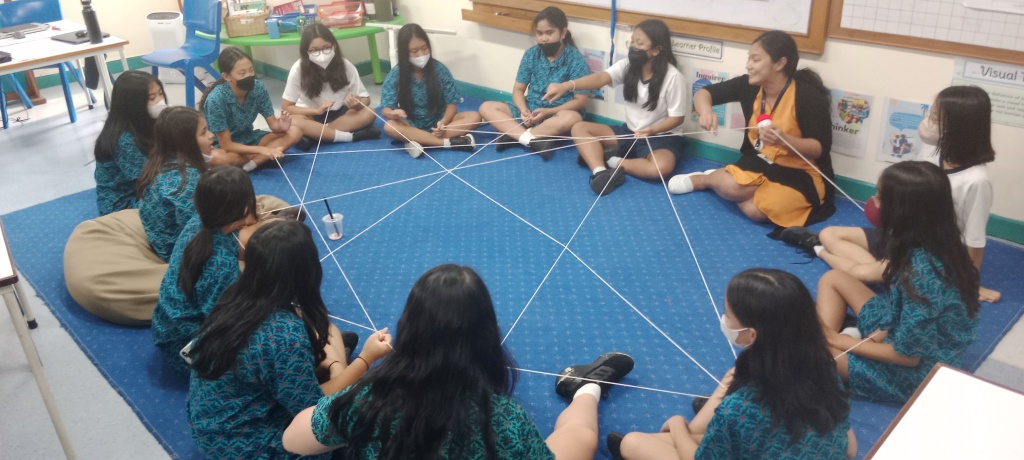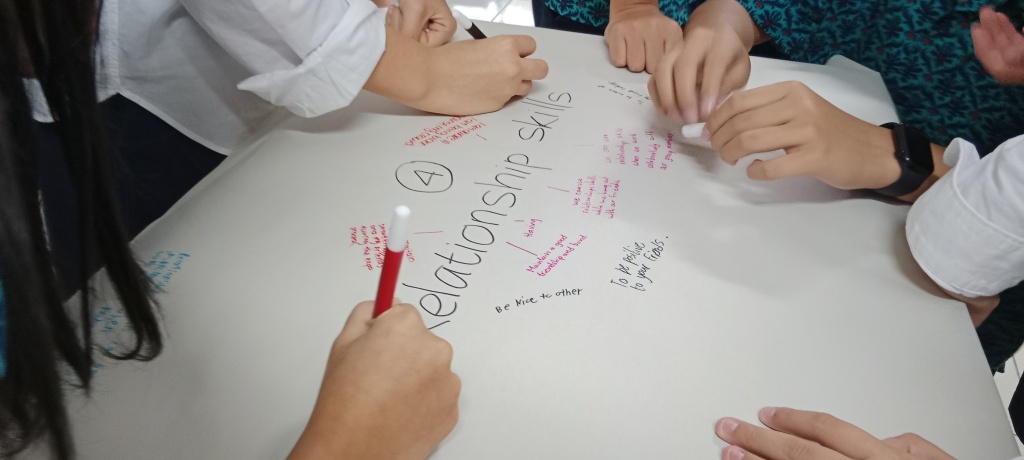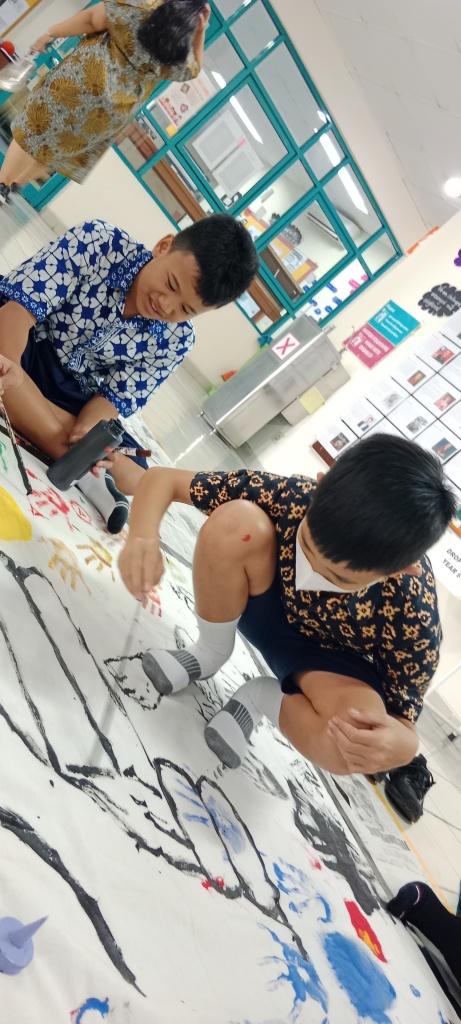SEL
Developing social and emotional skills
The adage, “Maslow before Bloom” reminds us, educators, of addressing students’ needs related to physiological, safety, belonging, esteem, and self-actualization before academics. If students’ fundamental needs are met first, it will have a positive impact on their learning.
Connected to addressing students’ well-being is the implementation of social and emotional learning (SEL), which promotes a safe, caring, and supportive environment. For our students to excel and be more ready, we have to equip them with social and emotional skills, not just literacy, numeracy, ICT or other academic skills.
Everyone, including parents, can work together to develop students’ social and emotional skills, which are the vital skills for success in school, work, and in life.
At BINUS SCHOOL Simprug, we teach our students the IB approaches to learning (ATLs), namely communication skills, research skills, self-management, social skills, and thinking skills, and the different sub-skills.
Social and emotional learning is connected to social skills and self-management skills. The benefits of social and emotional learning include the following:
- Addressing everyone’s well-being
- Ensuring that everyone is successful and feels valued
- Enhancing student learning
- Applying life skills
- Showing empathy, understanding, and appreciation to others
- Reducing stress, anxiety and depression
- Avoiding conflict with others
- Establishing positive relationships
- Promoting learner agency
Looking at the 2020 IB Programme standards and practices, developing SEL skills is related to the following IB requirements:
Student support 3: The school fosters the social, emotional, and physical well-being of its students and teachers. (0202-03)
Student support 3.1: The school identifies and allocates spaces and resources to support the social, emotional, and physical well-being of its students and teachers. (0202-03-0100)
Student support 3.2: The school demonstrates in its systems, processes and policies attention to the social, emotional, and physical well-being of its students and teachers. (0202-03-0200)
Student support 3.3: The pedagogical leadership team and teachers support students’ social, emotional and physical well-being. (0202-03-0300)
Student support 3.4: The school promotes open communication based on understanding and respect. (0202-03-0400)
One strategy that we can use to foster the social and emotional skills of our students is to make their own well-being visible. A person’s height is visible, but we cannot see an individual’s well-being, as it is inside the heart and mind.
Although well-being is an internal and invisible phenomenon, we can make it visible. We can find well-being clues based on what we see, hear, and feel. For example, we can ask our children to talk about or write what they see, hear, and feel when they are in class, at home, with their friends, or with their parents. Below is an example shared by one student.
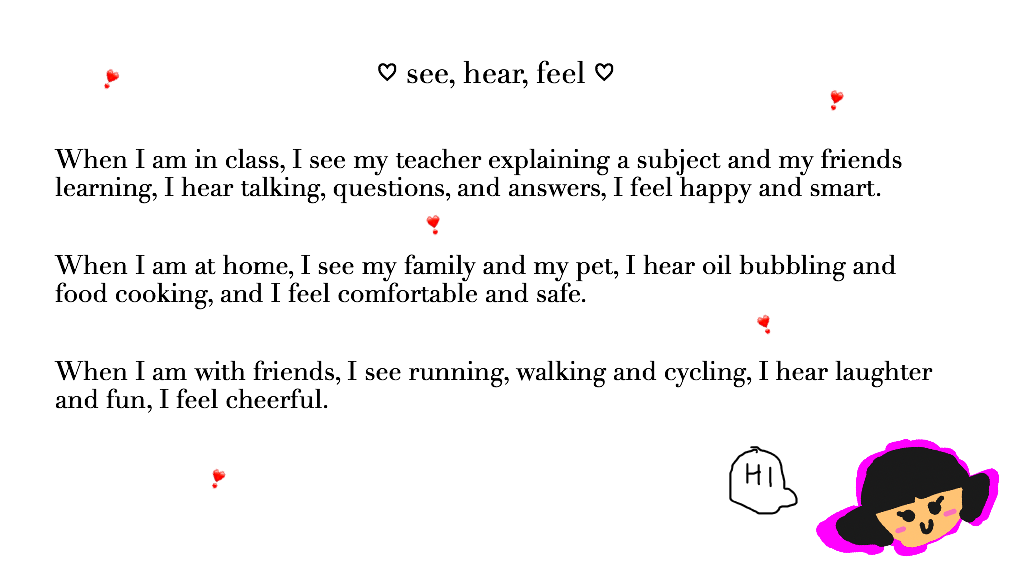
We can do the see-hear-feel technique with our children to make well-being visible. Interestingly, one student mentioned that when she is at home, she hears silence, as everyone in the family is busy doing their work.
Another strategy that we can use with our students is the five finger breathing exercise. We can use the index finger from the other hand to trace the hand slowly. As we trace up the tip of our finger, we inhale or breathe in. On the other hand, we exhale or breathe out as we trace down our finger.
When feeling anxious, upset, or offended, we can do deep breathing using the finger breathing technique. We can teach this simple exercise to our students. As shown below, it is a simple calming exercise using our fingers.
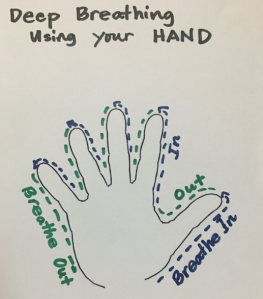
Managing or regulating emotions is important to students. In regulating emotions, students can be taught how to resolve problems. One approach involves asking the students to describe the problem, brainstorm solutions, choose the best solution, try the solution, and change the solution when needed.
Developing social and emotional skills of our students is a toolkit of practices. These practices include brain breaks activities using “Peace Out”, “Go Noodle”, and quick exercises by asking students to solve math equations.
Other practices by our colleagues on strengthening SEL skills include knowing and saying names of students, giving them a high-five or a hand-shake, using “Mood Meter”, and asking students to recognize, understand, label, express and regulate their emotions. During online learning, greeting students orally or in Microsoft Teams chat can substitute face-to-face greeting.
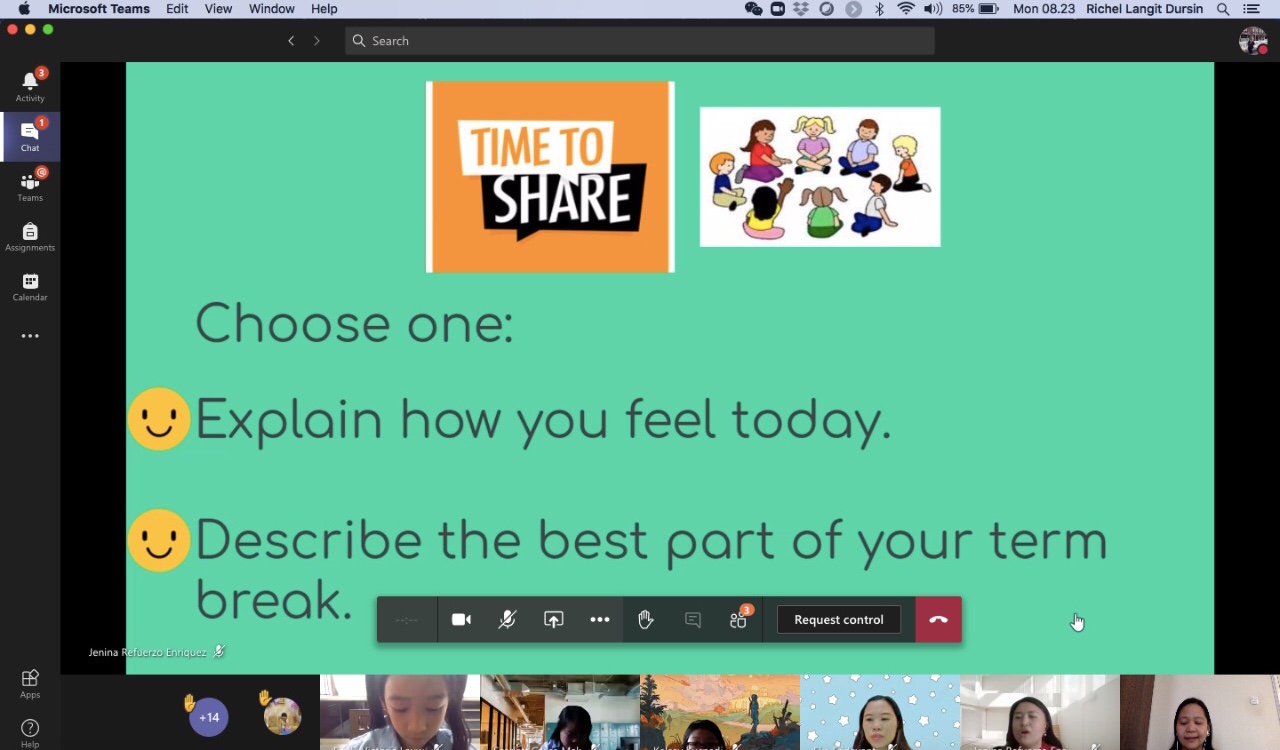
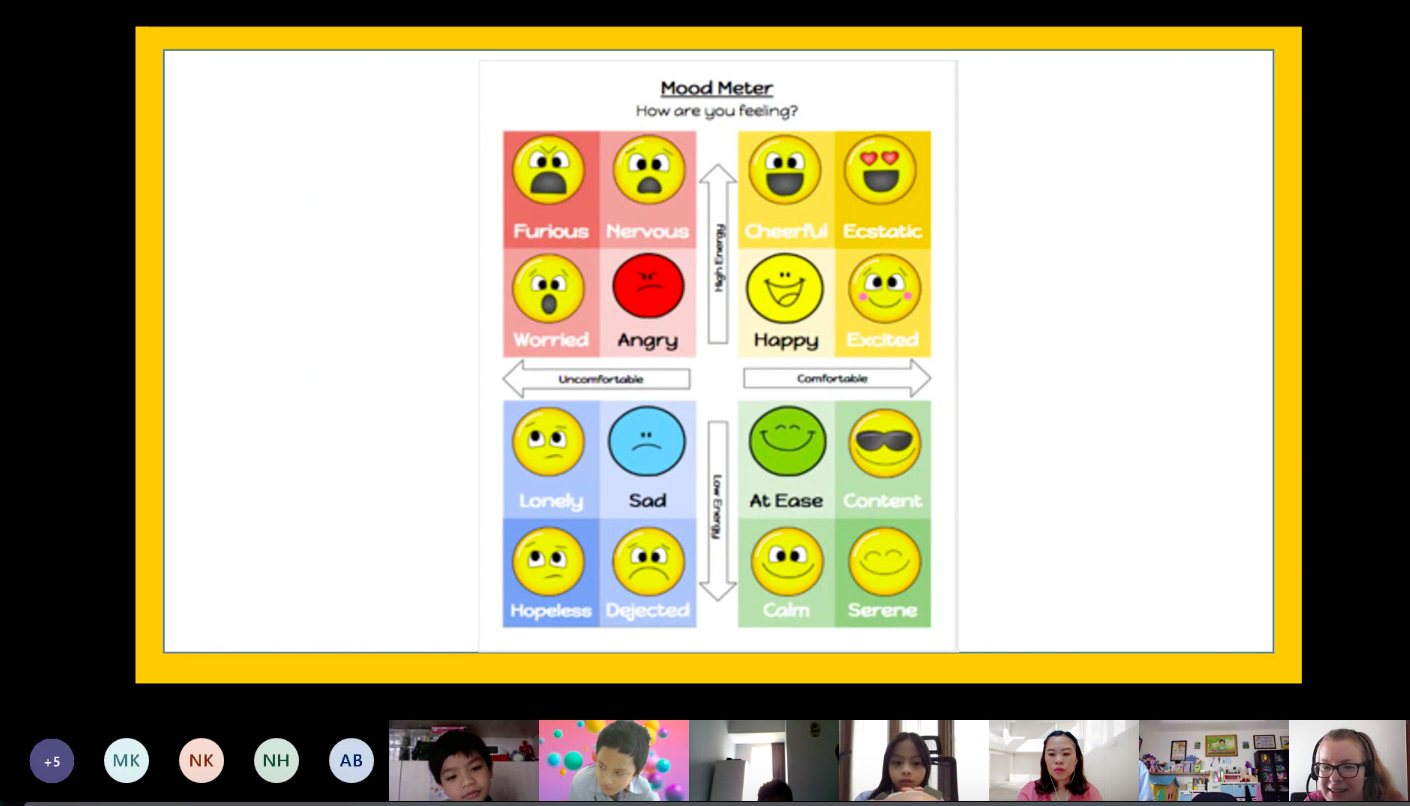
Linking the IB ATLs being focused on for each unit of inquiry with the Collaborative for Academic, Social, and Emotional Learning competencies can help teachers in the implementation of SEL. We can also consider collaboratively planning social and emotional learning engagements for the units of inquiry.
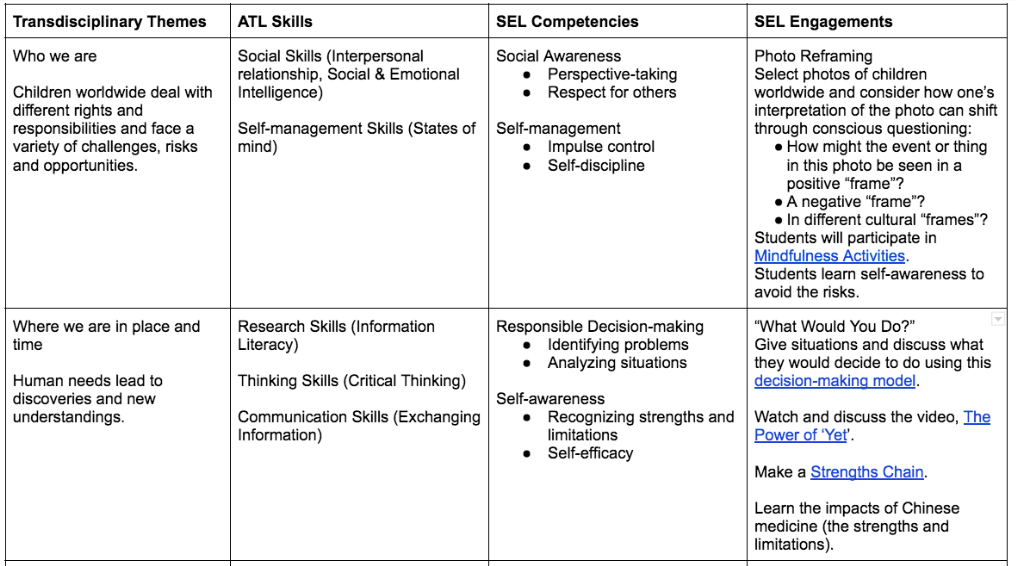
We all have an important role to play in developing social and emotional skills of students. Below is an illustration of what SEL implementation looks like, feels like, and sounds like at a school.

As human beings and educators, developing SEL skills has to be part of our “DNA”. For us to teach others, it has to start within ourselves. We need to model the SEL skills. Developing SEL skills can happen in all places and applies to us (teachers), our students, parents, and the rest of the school community.
Moreover, SEL development can be done all throughout the day and in every aspect of school culture, not just in the four walls of the classroom. Social and emotional learning does not have to be confined to a specific unit, time, or class. From the school lobby to the playground to the canteen to the hall, SEL is an essential part of our relationships and success.
By: Richel Langit-Dursin
EY-EL Vice Principal and PYP Coordinator
BINUS School Simprug
mdursin@binus.edu
Windy and Friends: Teaching Resilience
Every week the Year 6 students come together to learn in Windy and Friends. Windy and
Friends is a program the Year 6 students have every week where we gather to work together in groups consisting of people from different classes and the teachers from Year 6. 
We work together by getting in groups of eight or nine. Each group consists of lots of different personalities, which means there will be conflict now and then, but also we can finish our work quickly and correctly. From this activity, the Year 6 students learn about managing their time and solving group conflicts, while working together in groups. Students then think about logical ways to solve problems.
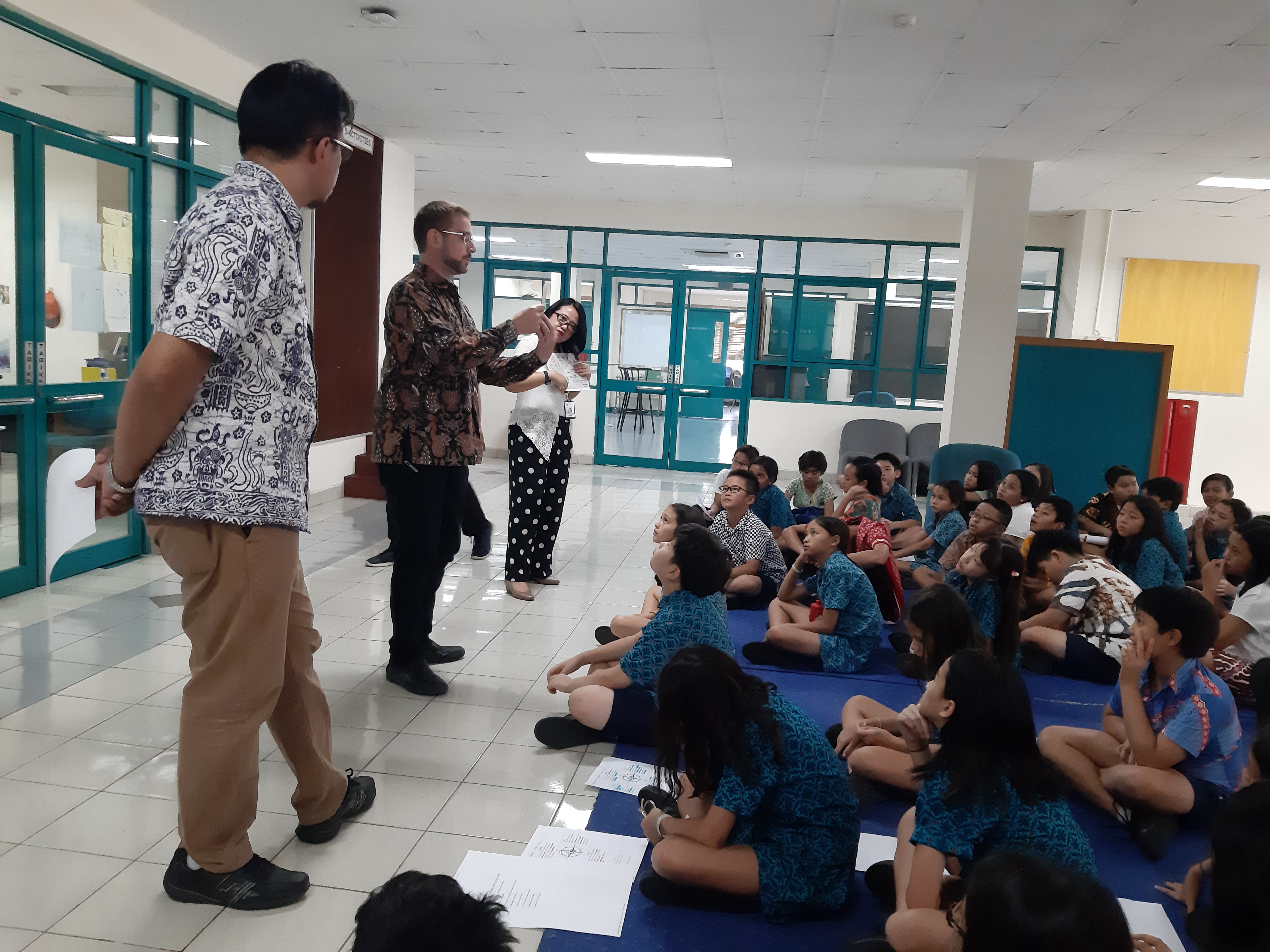
In Windy and Friends, we get to test our working skills and also our time management skills. What helps us in Windy and Friends is that we get to work with people who have the opposite personality as us so we can feel what it’s like to work with different people. Another thing that I think can help us in the future is that now we know how to resolve conflict and how to deal with negative thoughts. The lesson that we get from these lessons could be helpful for future learning and for success in group projects. Hopefully, we can learn more from the next Windy and Friends session.
How_To_Overcome_Failure_ (1)Failure_by__Davian__Gabriel__Seung_Jae__Asha_and_Kenisha (1)Windy_and_Friends_Poster_HW (1)
by Selma – 6C

